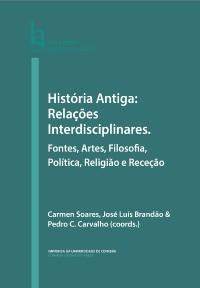Please use this identifier to cite or link to this item:
https://hdl.handle.net/10316.2/44728| Title: | A perenidade do binómio política-retórica no Anónimo Segueriano (ou a Arte do discurso político) | Other Titles: | The persistence of the political-rhetorical binomial in Anonymous Segueriano (or The Art of Political Speech) | Authors: | Pinheiro, Joaquim | Keywords: | Anonymous Seguerianus;rhetoric;political speech;exordium;Anónimo Segueriano;retórica;discurso político;exórdio | Issue Date: | 2018 | Publisher: | Imprensa da Universidade de Coimbra | Journal: | http://hdl.handle.net/10316.2/44715 | Abstract: | The treatise known as Anonymous Seguerianus, found by Séguier de St. Brisson
in 1838 in the Bibliotèque Royale de Paris, is a starting point to an improved understanding
of how classical rhetoric evolved. Edited for the first time in 1840 in a single manuscript
and also known by the title The Art of Political Speech, the text raises many doubts related to
its authorship. Nevertheless, the conception and transmission of the text are problematic to
scholars (Graeven 1891, Dilts & Kennedy 1997, Vottero 2004 e Patillon 2005). Leaving
aside these questions, it is our goal to analyse the rhetorical material explored in the treatise,
and especially the sequence constituted by the four sections of political speech, setting it in
the context of classical rhetoric (Aristotle, Cicero, Quintilian, Hermogenes, among others).
In order to explore the relationship between orator and audience, one of the main features of
political oratory, we will explore with special interest what the treatise proposes as characteristics
of the exordium or prooimion, as well as the sources it uses. O texto conhecido por Anónimo Segueriano, assim designado pelo facto de ter sido descoberto por Séguier de St. Brisson, em 1838, na Biblioteca Real de Paris, ajuda- -nos a compreender melhor a evolução da retórica clássica. Editado pela primeira vez em 1840 e preservado num único manuscrito (Par. gr. 1874), também conhecido pelo título Arte do discurso político, levanta muitas dúvidas quanto à sua autoria, mas também a concepção e a transmissão são motivo de discussão entre os estudiosos (Graeven 1891, Dilts & Kennedy 1997, Vottero 2004 e Patillon 2005). Não são estas questões que analisaremos, mas o conteúdo retórico do tratado, em especial a sequência das quatro partes do discurso político (exórdio, narração, argumentação e peroração), com o indispensável enquadramento da temática na tradição retórica clássica (Aristóteles, Cícero, Quintiliano, Hermógenes, entre outros). Sobretudo para explorar a relação entre orador e auditório, um dos aspectos fundamentais da retórica política, abordaremos, em particular, as características que o tratado expõe sobre o exórdio ou proémio (§§4-39), bem como as fontes que utiliza. |
URI: | https://hdl.handle.net/10316.2/44728 | ISBN: | 978-989-26-1564-6 (PDF) 978-989-26-1563-9 |
DOI: | 10.14195/978-989-26-1564-6_13 | Rights: | open access |
| Appears in Collections: | História Antiga: relações interdisciplinares: fontes, artes, filosofia, política, religião e receção |
Files in This Item:
| File | Description | Size | Format | |
|---|---|---|---|---|
| a_perenidade_do_binomio_politica-retorica.pdf | 286.28 kB | Adobe PDF |  |
Items in DSpace are protected by copyright, with all rights reserved, unless otherwise indicated.
